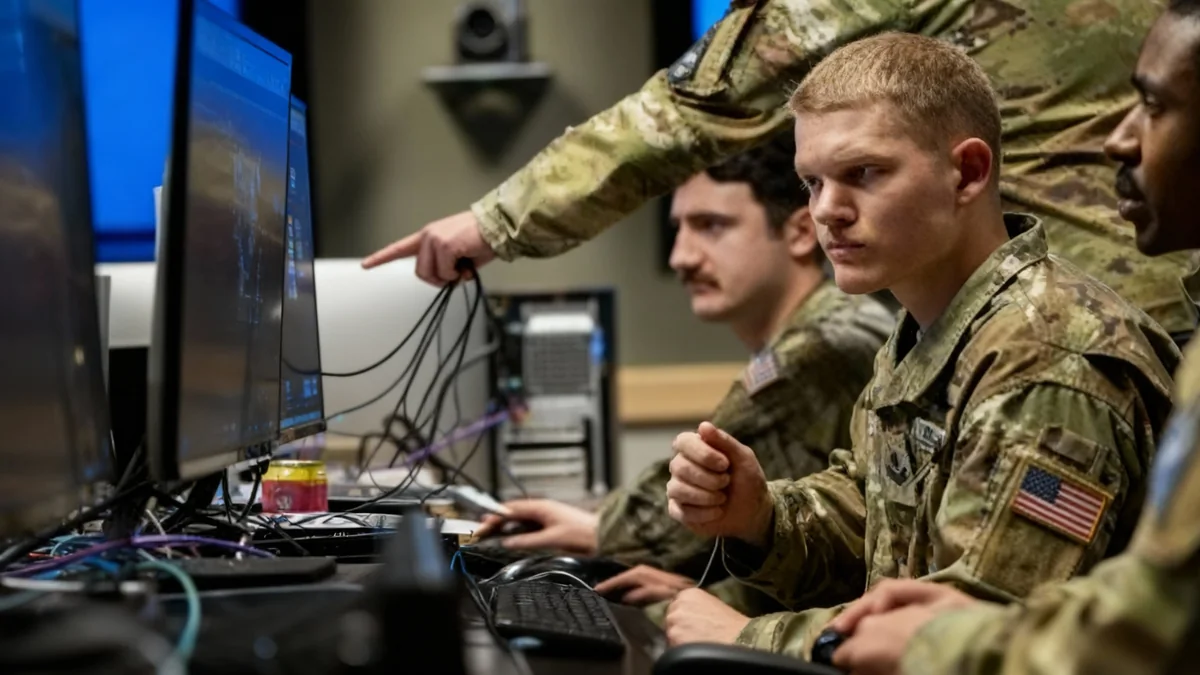The United States Space Force is accelerating its adoption of artificial intelligence and autonomous systems to address the growing congestion and threats in Earth's orbit. Officials state these technologies are critical for processing vast amounts of data and maintaining operational resilience against advancing adversaries.
The strategic shift comes as competitors, particularly China, significantly increase investments in space and military technologies, transforming orbit into a contested domain where U.S. assets face constant challenges.
Key Takeaways
- The U.S. Space Force is prioritizing AI and autonomy to manage the increasingly crowded and contested space environment.
- Officials have identified China as a major competitor, citing its significant surge in science and technology investments for military space capabilities.
- Key technological goals include improving data analysis at the edge, automating manual tasks, and enhancing the resilience of communication networks.
- The strategy involves close collaboration with private industry and international allies to leverage specialized expertise and share development costs.
The New Strategic Landscape in Orbit
The environment in space has fundamentally changed. Once considered a safe sanctuary, it is now a crowded and competitive arena. According to Gillian Bussey, the Space Force's deputy chief science officer, this shift requires a new approach to defense and technology.
The primary driver for this change is the rapid advancement of other nations. "We’ve seen a surge in S&T investments from China, and a lot of those investments are panning out and are leading to significant military capability that we have to answer," Bussey stated at a recent defense conference.
This increased competition means U.S. space assets are no longer untouchable. "We see our adversaries putting up new capabilities that really challenge our understanding of what is accessible use of space," Bussey explained. This reality shapes the service's science and technology priorities.
A Strategy of "Reveal and Conceal"
To deter potential conflict, the Space Force employs a strategy of simultaneously revealing and concealing its capabilities. Lawrence Robertson, a lead space experimentalist at the Air Force Research Laboratory, said the goal is to show enough strength to make adversaries pause, while keeping critical systems hidden. This approach depends on continuous investment in long-term research and development.
Harnessing Disruptive Technologies for Data Dominance
The sheer volume of data generated by orbital assets presents a significant challenge. The Space Force is looking to a combination of technologies, not just single solutions, to manage this information overload effectively.
Bussey emphasized that the true disruption comes from the integration of multiple technologies. "It’s not just the impact of AI or the impact of autonomy; it’s the impact of AI plus autonomy plus cyber plus some of the new microelectronics," she said. This layered approach is where the service expects to find its technological edge.
Automation and AI in Ground Systems
A primary focus is modernizing ground control stations, many of which rely on technology that is decades old. The goal is to use automation and AI to handle routine, manual tasks, freeing up human operators, or Guardians, for critical decision-making.
"We need technologies, particularly in automation, AI, to help the guardians do what they do best, which is create new things, make decisions that we only want humans to make and let the machines sift through large amounts of data," Bussey noted.
Processing Data at the Edge
To speed up analysis, the Space Force is pushing for more data processing to occur in orbit rather than on the ground. This concept, known as edge computing, reduces the reliance on large data pipelines and ground stations.
By combining AI, autonomous systems, and advanced microelectronics on satellites, assessments can be made directly in space. This creates a more resilient and responsive network that is less vulnerable to disruptions on the ground. Bussey suggested pairing this with mesh networking to ensure secure and adaptive communications.
Updated Science and Technology Priorities
In 2023, the Space Force established key S&T goals, including automation, improved space domain awareness, and cyber dominance. Following a summit in mid-August, the service set eight new priorities. While the specifics remain undisclosed, officials confirmed that some themes, such as automation, have carried over.
Collaboration with Industry and International Allies
The Space Force cannot develop these advanced capabilities alone. The service is actively strengthening its partnerships with private industry and international allies to accelerate innovation and share the burden of development.
Engaging the Private Sector
Officials are urging industry partners to think critically about how their technologies can be applied to military space challenges. Robertson advised companies to "be your own best critic of your technology" and align their proposals with the Space Force's carefully worded strategic documents.
Bussey extended an open invitation to industry leaders to discuss their capabilities. "We can provide direction, and we can provide advice, and we can help you frame your technology in terms of what the warfighter needs," she said, adding that the service can help identify why a particular technology is novel and impactful.
Strengthening International Partnerships
International cooperation is a cornerstone of the Space Force's S&T strategy. The service is working with allies both within and outside of NATO to leverage unique national strengths.
- Japan: Recognized for excellence in robotics, microelectronics, and novel sensing.
- South Korea: Partnered with the U.S. in the Ulchi Freedom Shield 25 all-domain training exercise.
- Australia: Possesses capabilities that the Space Force is actively exploring.
- Germany: Noted for its expertise in high-temperature materials.
This collaborative model allows the U.S. to focus on its core strengths while benefiting from the specialized expertise of its partners. "Together we’re better than the sum of our parts," Bussey concluded.
To further this goal, the Space Force participated in the Schriever Wargame 2025, an event where operators from the U.S. and nine other nations tested future technologies and improved data-sharing protocols.
Looking Ahead to the Future Operating Environment
To anticipate future challenges and opportunities, the Space Force is casting a wide net for ideas. Bussey suggested that the service should engage with a diverse group of experts to build a comprehensive picture of the future.
"You want to have the intelligence community involved, you want to talk to futurists, you might even want to talk to science fiction writers, just so we have creative ideas of where the future could go," she said.
Additionally, she highlighted the value of observing investment trends in the venture capital community. These trends can reveal emerging technologies that the military might otherwise overlook. By combining military, industry, and creative perspectives, the Space Force aims to stay ahead in a rapidly evolving domain.





